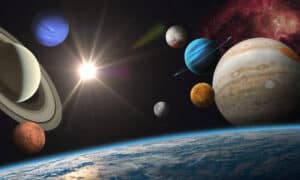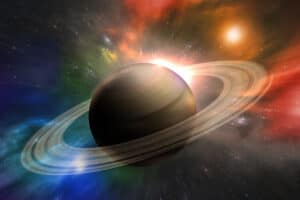Located within the Milky Way galaxy, our solar system consists of everything within the gravitational pull of the sun. Included in the solar system are the seven main planets, dwarf planets, other celestial bodies, and over 200 moons. Moons orbit the planets and even some large asteroids, ranging in size from around 13 kilometers (eight miles) in diameter to over 5,000 kilometers (3,100 miles) across. These are the seven largest moons orbiting our solar system.
Ganymede
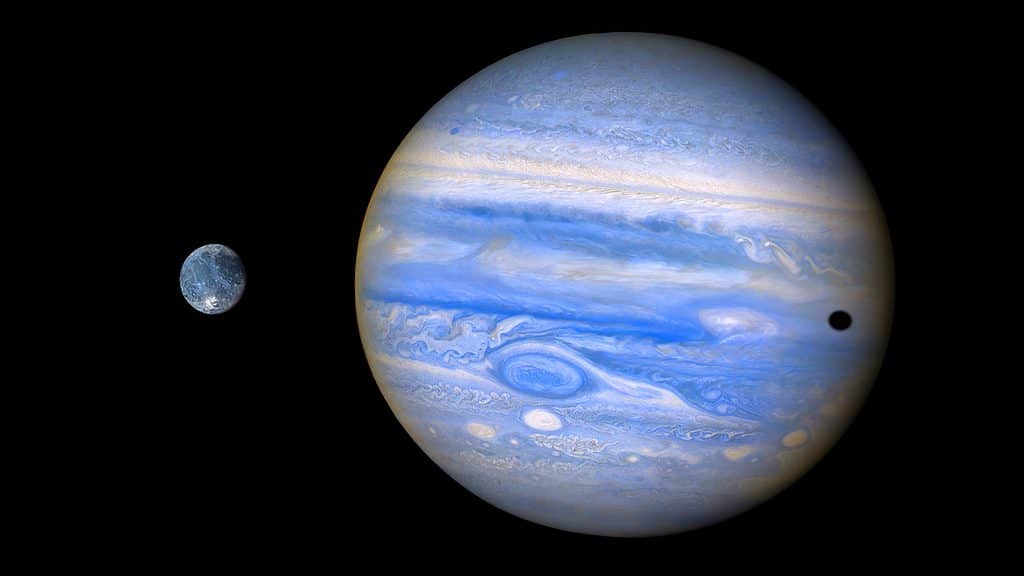
Ganymede is Jupiter’s largest moon. Pictured is Ganymede (left) next to Jupiter (right). Image elements furnished by NASA.
©Claudio Caridi/Shutterstock.com
Ganymede, Jupiter’s largest moon, is also the largest moon in our solar system. Ganymede has a diameter of 5,270 kilometers, or 3,725 miles. This is just larger than the planet Mercury, which measures 4,878 kilometers (3,030 miles) from one end to another. Beneath Ganymede’s icy crust is a large iron core that radiates a magnetic field much weaker than Earth’s. The magnetic field causes glowing clouds of gas called auroras to surround the moon’s atmosphere, giving off the same effect as Earth’s Aurora Borealis, or Northern Lights.
Titan

Titan, one of Saturn’s moons, is the second largest in our system. Pictured is a view of Saturn from Titan. Image elements furnished by NASA.
©Vadim Sadovski/Shutterstock.com
The second largest moon in our solar system is Saturn’s moon, Titan. Titan has a diameter of 5,149 kilometers (3,200 miles), making it only slighter smaller than Ganymede. The atmosphere on Titan exudes a golden glow from dense gasses, and ice coats the surface. Flowing natural gasses such as methane and ethane carve through Titan’s surface, creating large lakes of natural gas similar to the bodies of water on Earth.
Callisto
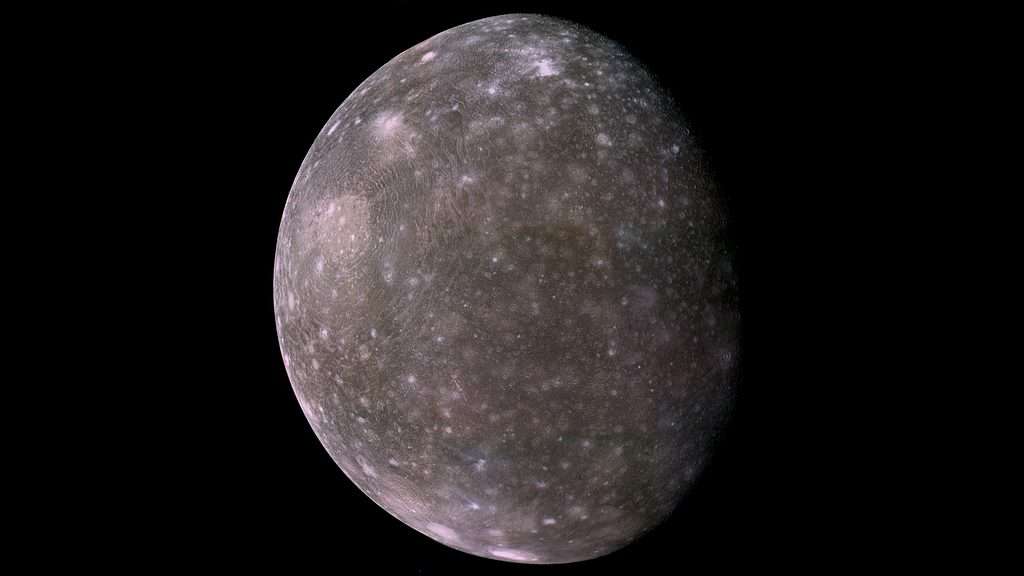
After Titan is Callisto, the third largest moon in the solar system. Image elements furnished by NASA.
©Claudio Caridi/Shutterstock.com
Callisto, Jupiter’s eighth moon, is the third largest moon in our solar system with a diameter of 4,820 kilometers, or 2,995 miles. The icy and rugged surface of the moon is thought to be the oldest in our solar system, with scientists estimating an age of over four billion years. The moon has an extremely thin atmosphere referred to as its exosphere that is made up of gases such as carbon dioxide, hydrogen, and oxygen.
Io
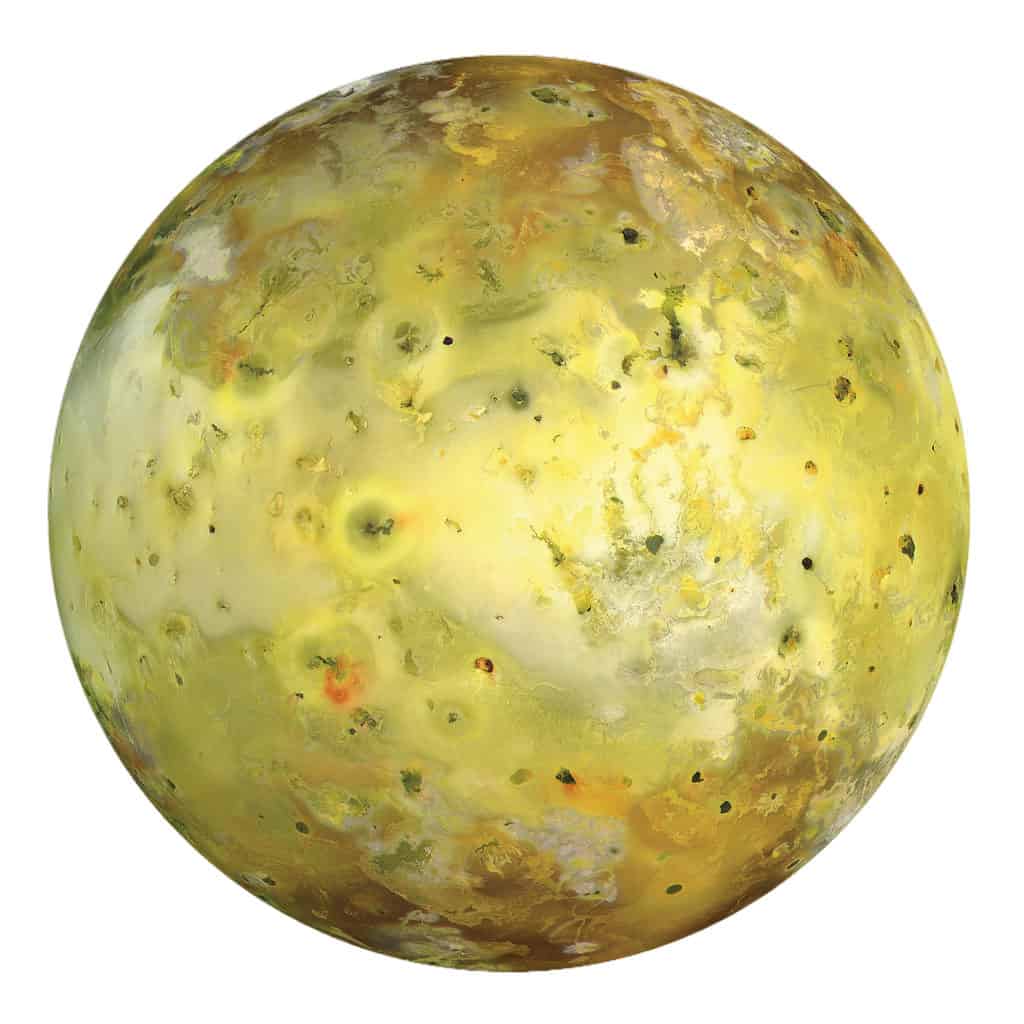
The most explosive surface in the solar system is on Io, as it is covered in volcanic activity. Image elements furnished by NASA.
©Elena11/Shutterstock.com
Jupiter’s moon Io has the most explosive surface in the solar system as it is almost completely covered in volcanic activity. It has a diameter of around 3,640 kilometers (2,622 miles), making it only slightly larger than Earth’s moon. Sulfur dioxide gas makes up the majority of the moon’s atmosphere, and molten iron and rock make up the core. The gravitational pull of Jupiter stimulates the constant volcanic activity on the surface, giving the moon a bright orange luminescent glow.
Earth’s Moon
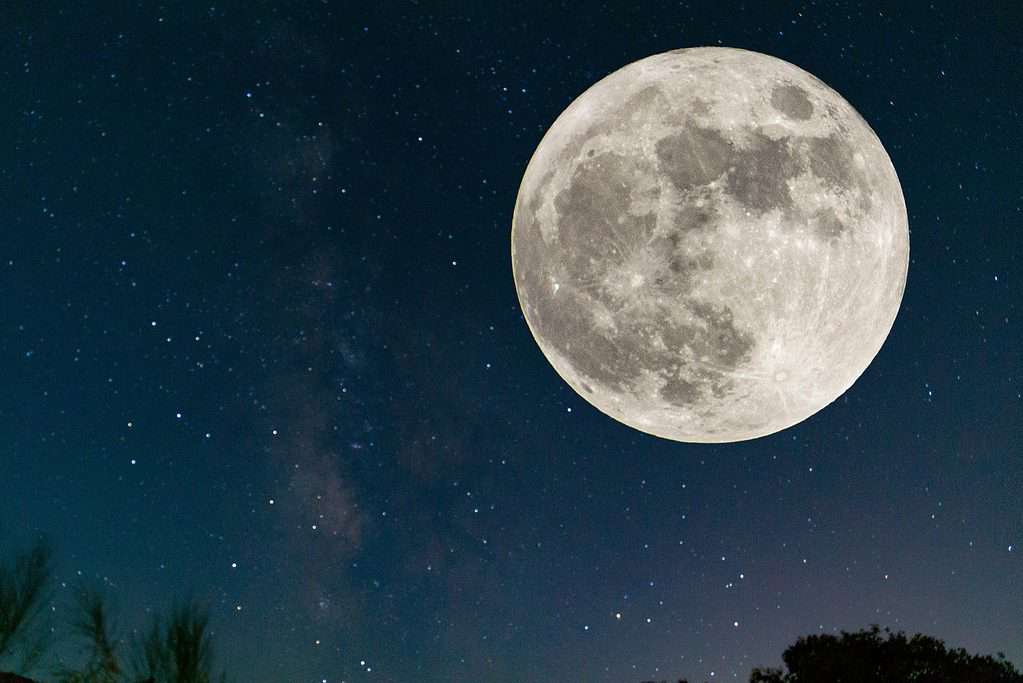
Our moon is around one-quarter the size of Earth. Pictured is the full moon on October 9, 2022, the Hunter’s Moon.
©Fernando Astasio Avila/Shutterstock.com
The fifth-largest moon in the solar system is Earth’s moon. The moon is around one-quarter of the size of Earth with a diameter of 3,475 kilometers, or 2,160 miles. It has a solid iron core and a rocky, crater-ridden surface made up mainly of magnesium, oxygen and aluminum. The craters on the surface are largely results of impacts from objects like asteroids and debris over the course of the moon’s formation. These impacts occurred due to the moon’s extremely thin exosphere, offering very little protection from other celestial bodies.
Europa
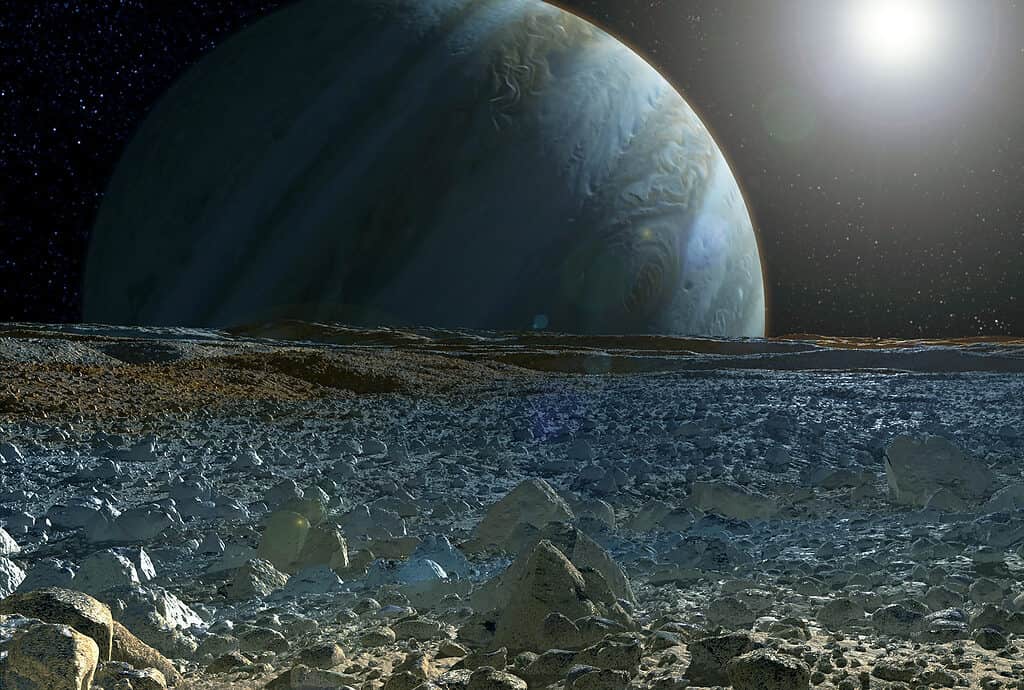
Pictured is a view of Jupiter from Europa. Image elements furnished by NASA.
©Artsiom P/Shutterstock.com
Europa is the smallest of Jupiter’s four Galilean moons, measuring 3,130 kilometers (1,940 miles) in diameter. This makes Europa about 90 percent the size of Earth’s moon. Icy formations decorate the entire moon, and mainly rock comprises the largely frozen surface. Europa’s atmosphere is comprised of oxygen and hydrogen, giving it a very weak pressure.
Triton
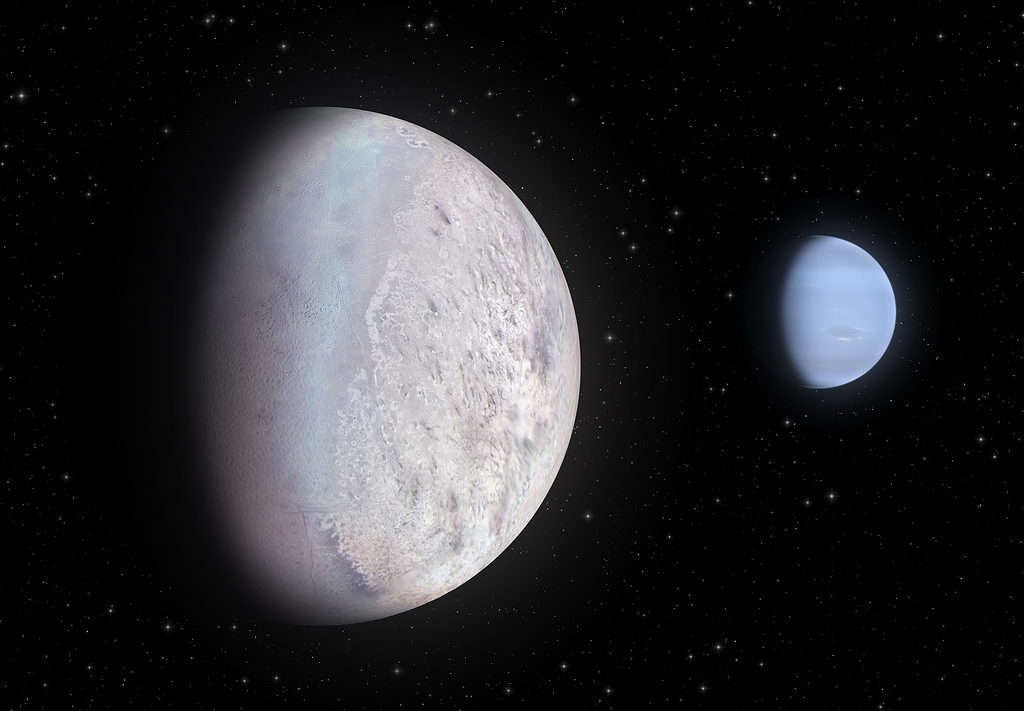
Triton is the largest moon orbiting Neptune. Pictured is Triton (right) next to Neptune (left).
©Diego Barucco/Shutterstock.com
The largest moon orbiting the planet Neptune, Triton, has a diameters of 2,076 kilometers, or 1,681 miles. Triton is only slightly smaller than dwarf planet Pluto, which has a diameter of 2,370 kilometers (1,473 miles). The moon is comprised of a rock and metal core, making it incredibly dense, and a surface of frozen nitrogen. The atmosphere consists mainly of nitrogen and methane gas, likely present due to volcanic activity on Triton’s surface.
Conclusion
Past our own solar system lies over 3,000 other planetary systems, all with their own planets and moons. These moons range much from much smaller to incredibly larger than the ones in our solar system. While moons are satellites for larger planets, many have unique, fascinating characteristics that distinguish them including atmospheres, oceans, and rare materials. They often get little attention, but moons can be more detailed and complex than the planets they orbit.
Summary of the 7 Largest Moons in the Solar System
| Rank | Moon | Diameter |
|---|---|---|
| 1 | Ganymede | 3,725 miles |
| 2 | Titan | 3,200 miles |
| 3 | Callisto | 2,995 miles |
| 4 | Io | 2,622 miles |
| 5 | Earth’s Moon | 2,160 miles |
| 6 | Europa | 1,940 miles |
| 7 | Triton | 1,681 miles |
The photo featured at the top of this post is © Vadim Sadovski/Shutterstock.com
Thank you for reading! Have some feedback for us? Contact the AZ Animals editorial team.




